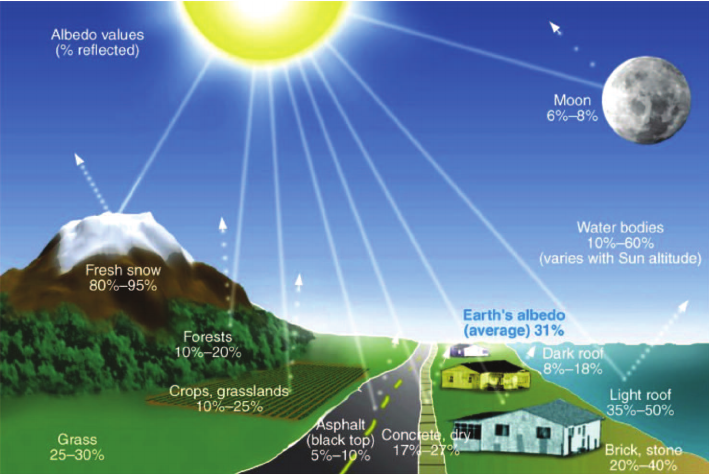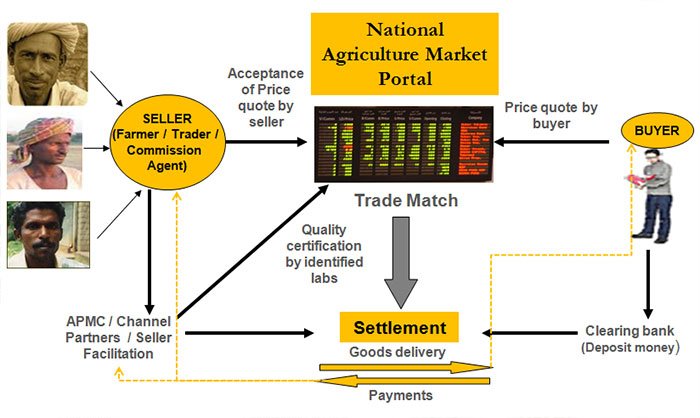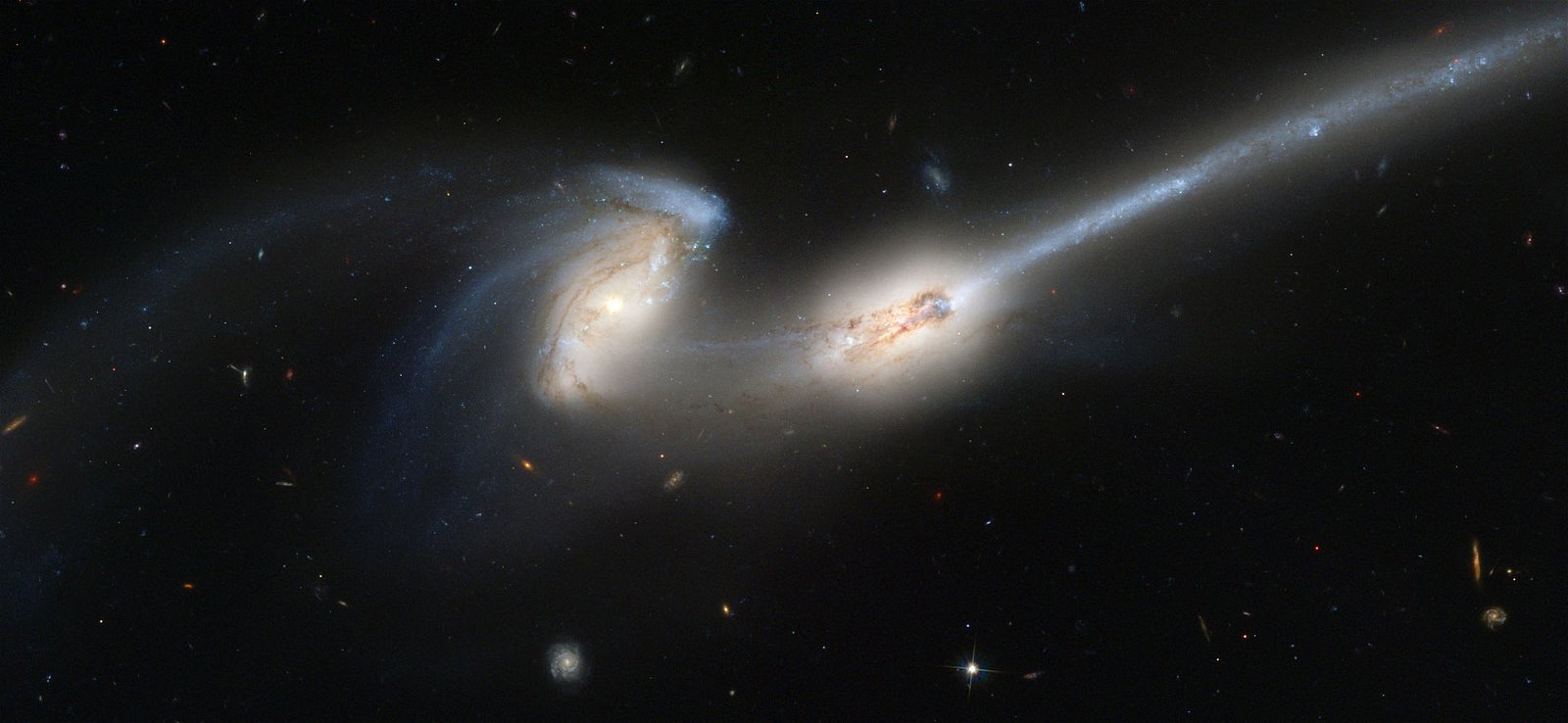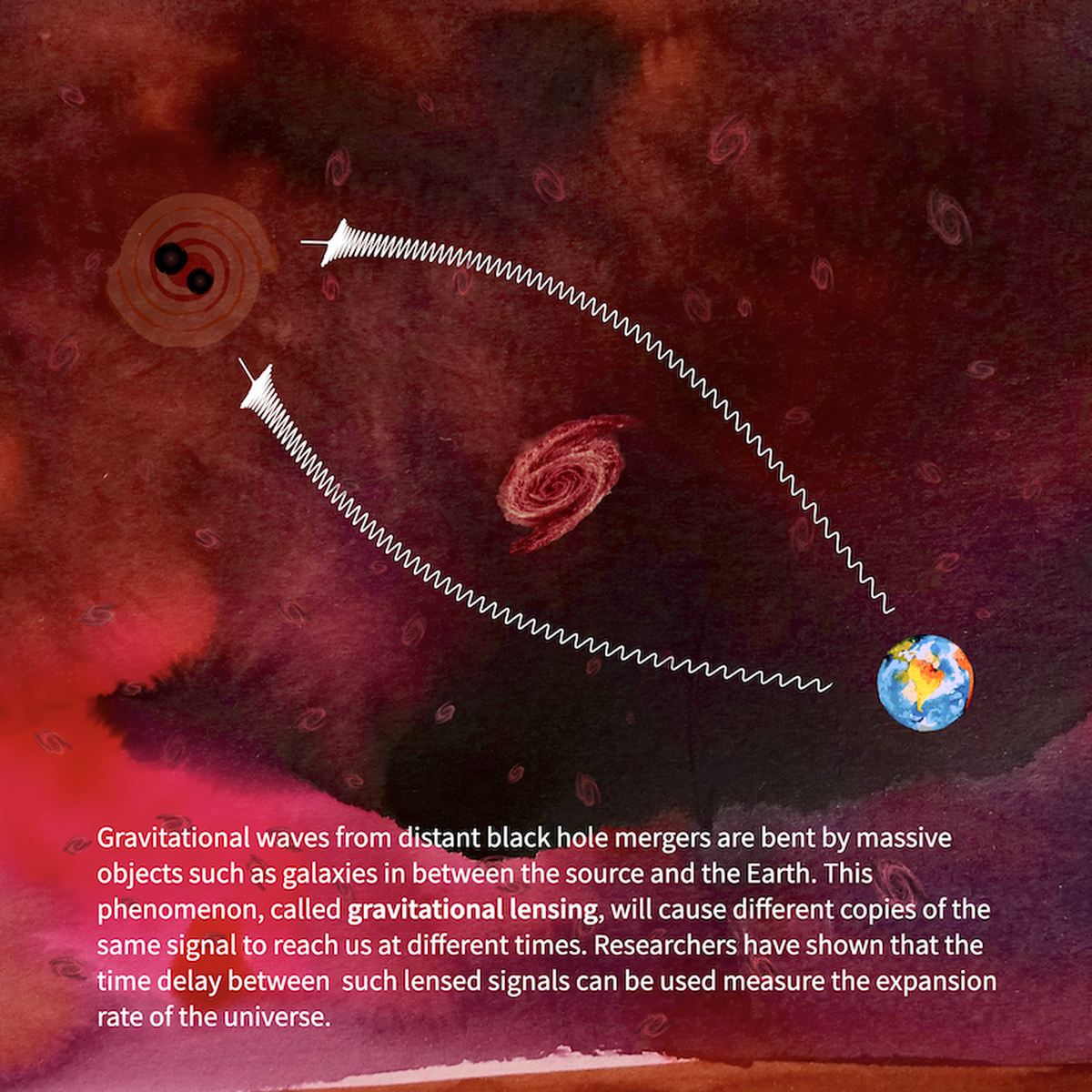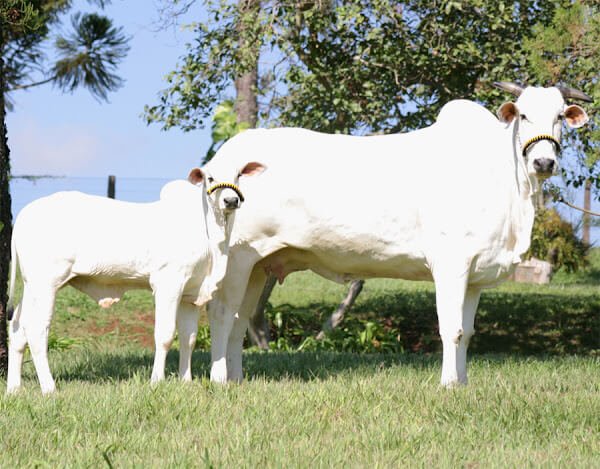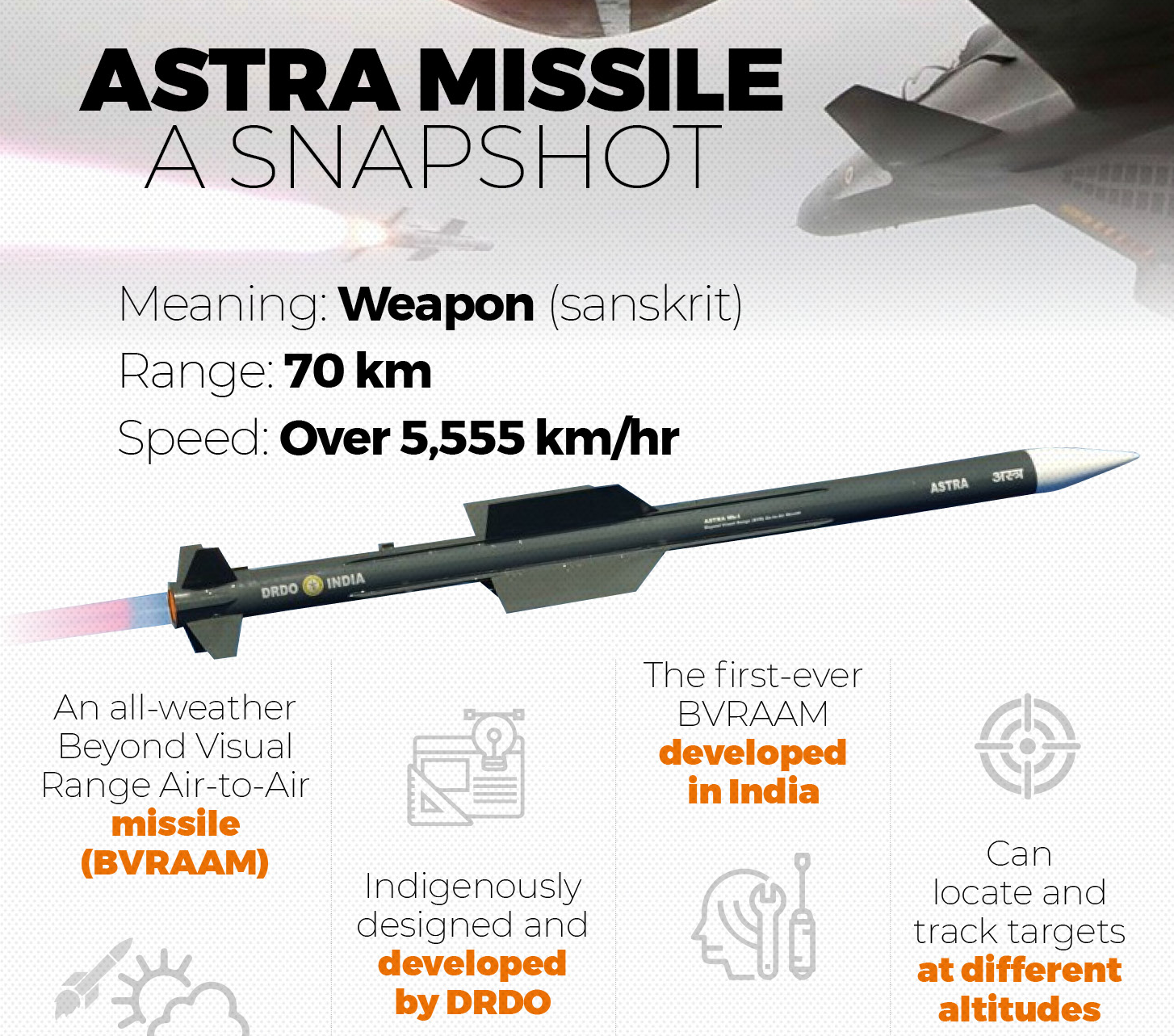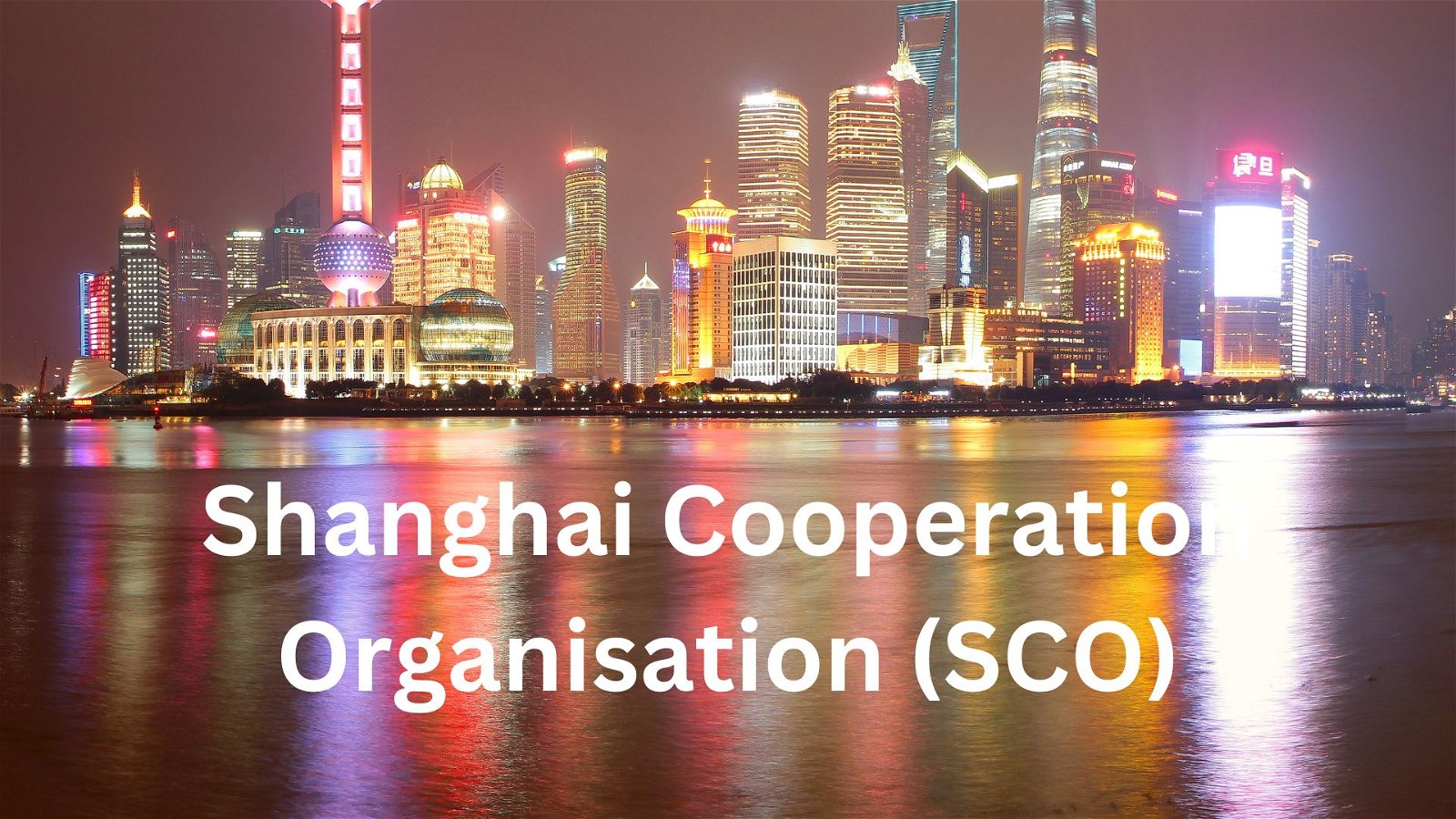
Current Affairs for UPSC Civil Services Exam – April 03, 2024
Subscribers of "Current Affairs" course can Download Daily Current Affairs in PDF/DOC
Subscribe to Never Miss an Important Update! Assured Discounts on New Products!
Must Join PMF IAS Telegram Channel & PMF IAS History Telegram Channel
{GS1 – Geo – PG – Climatology} Kallakadal
What is Kallakkadal?
- Kallakkadal is essentially coastal flooding during the pre-monsoon (April-May) season by swell waves on the southwest coast of India.
- In Malayalam, “Kallan” means thief, & “Kadal” means sea, referring to “ ocean that arrives as a thief.”
- United Nations Educational, Scientific, and Cultural Organization (UNESCO) formally approved the term in 2012.
- Kallakkadal occurs without precursors or any local wind activity, making it very difficult for the coastal population to get an advance warning.
- However, the Swell Surge Forecast System by the Indian National Centre for Ocean Information Services (INCOIS) provides a warning seven days in advance.
Formation of Kallakkadal
- Kallakkadal is caused by waves that are formed by an ocean swell. Hence, the name swells surge.
- Ocean swells occur not due to local winds but rather to distant storms, such as hurricanes or even long periods of fierce gale winds.
- During such storms, huge energy transfers occur from the air into the water, leading to the formation of very high waves.
- Such waves can travel thousands of kilometres from the storm centre until they strike shore.
Kallakkadal versus Tsunami
- Cause of formation: Strong wind system| Earthquake tremors.
- Wavelength: Meters | Thousands of Kilometers.
- Disturbance: No noticeable change in local winds | Underwater turbulence.
Current episode
- A low atmospheric pressure system moved over the South Atlantic Ocean.
- The arrival of such a pressure system resulted in strong winds forming swell waves up to 11 metres.
- Kerala and Lakshadweep would be impacted for about a week before these waves weaken gradually.
- The eastern coast of India, like the coasts of Andhra Pradesh, Odisha, West Bengal, and Andaman and Nicobar Islands, is also likely to experience it.
{GS1 – Geo – PG – Climatology} Tornado in Jalpaiguri, West Bengal
- Context (DTE): On March 31, 2024, a devastating tornado struck the Mainaguri area of Jalpaiguri district in West Bengal.
- The tornado lasted for about 10 minutes, resulting in five fatalities and over a hundred injuries.
Tornado Activity in India
- Tornadoes are rare in India but are mostly reported in eastern states like West Bengal, Odisha, and Jharkhand during the pre-monsoon period. However, evidence suggests that tornadoes have also formed in northwest India.
- A research paper by scientists from the India Meteorological Department (IMD) in 2016 documented various tornado records in eastern India.
- The paper reported the highest number of tornadoes in Bengal, with significant fatalities.
- Tornado activity was also recorded in northwest India, indicating a potential increase in frequency in later years.
- India has witnessed a rise in tornado occurrences in recent years, leading to significant destruction.
- Factors such as the warming Bay of Bengal and anomalous wind patterns are believed to contribute to the formation of tornadoes.
How are Tornadoes formed?

Understanding Tornadoes
- A tornado is a violently rotating column of air that extends from a thunderstorm to the ground.
- Tornadoes can have wind speeds ranging from 105 to 322 kilometres per hour.
- Cyclonic circulations and troughs are contributing factors to tornado formation.
- Tornadoes can be either stationary or move at speeds of around 97 km/h.
- Tornadoes are most common in countries like the United States, Argentina, and Bangladesh.
Monitoring
- In the US, tornadoes are monitored by meteorologists at NWS using satellite and radar data.
- India lacks official tornado monitoring, although IMD mentioned the recent West Bengal tornado in a press release.
{GS2 – Social Sector – Education} Early Childhood Care and Education (ECCE)
- Context (PIB): The Ministry of Women and Child Development is launching-
- A National Curriculum for Early Childhood Care and Education (NCECCE) for Children from Three to Six Years and
- A National Framework for Early Childhood Stimulation for Children (NFECSC) from Birth to Three Years.
- The Ministry seeks to strengthen India’s Early Childhood Care and Education (ECCE) landscape, as 85% of brain development occurs before the age of six years.
- These initiatives are in line with the objectives set forth in the National Education Policy 2020.
- The documents have been prepared by the National Institute for Public Cooperation and Child Development (NIPCCD) with the support of an Internal Committee and development partners.
- NIPCCD will lead the training of Anganwadi functionaries on the new Curriculum and Framework.
National Institute for Public Cooperation and Child Development (NIPCCD)
|
NCECCE 2024
- It encompasses all developmental domains, as outlined in the National Curriculum Framework for Foundational Stage 2022 (NCF-FS).
- These domains include physical/motor, cognitive, language and literacy, socio-emotional, cultural/aesthetic, and fostering positive habits, catering to children aged three to six.
- The curriculum offers 36 weeks of active learning, eight weeks of reinforcement, and four weeks of initiation.
- Special focus has been given to the screening, inclusion and referrals of Divyang children in every activity.
- Community engagement has been facilitated through monthly ECCE days and a continuum of home learning activities for each week.
Objective
- To improve the quality of ECCE transacted at the Anganwadi Centre, competency-based lesson plans and activities should be prioritised and presented in a simple and user-friendly manner.
- It focuses on how children learn during their early years, emphasising playful and joy-based learning approaches to prepare them for primary school.
NFECS 2024
- It targets caregivers and Anganwadi Workers to provide holistic early stimulation for children aged birth to three years.
- This includes responsive caregiving and early learning opportunities to support optimal physical and cognitive development.
- Screening, inclusion, and referrals for Divyang children are provided with particular focus.
Objective
- To equip Anganwadi Workers with essential knowledge about children’s growth and development, emphasising the significance of brain development and the importance of nurturing care.
- It focuses on the principles of serve and return, the caregiver’s three acts: love, talk, play, and positive guidance.
Early Childhood Care and Education( ECCE)
- Early childhood is the formative stage of the first six years of life. It is the period of most rapid growth and development and is critical for the survival of an individual as a toddler.
- ECCE encompasses care, health, nutrition, play, and early learning within a protective and enabling environment.
- India has 158.7 million children in the 0-6 years age group (Census 2011) and catering to this vital segment of the population to ensure holistic development is imperative.
- India is also a signatory to the Convention on the Rights of the Child (CRC) 1989 and Education for All (EFA) 1990, which postulates ECCE as the first goal of ‘Education For All’.
- Also, under SDG 4.2, the target is to ensure that all girls and boys have access to quality early childhood development, care, and pre-primary education so that they are ready for primary education by 2030.
Significance of ECCE
- Critical stages in the development of the brain during early childhood influence the pathways of physical and mental health and behaviour throughout the life cycle.
- The deficits during these early stages of life have substantive and cumulative adverse impacts on human development.
- According to UNICEF, Pre-primary education gives children a solid foundation upon which all learning depends, making every subsequent stage of education more efficient and productive.
- Attention to ECCE is the most cost-effective way to break the intergenerational cycle of multiple disadvantages and remove inequity, leading to long-term social and economic benefits.
Constitutional and Legal Provisions concerning ECCE in India
- Art 45 of IC: The State shall endeavour to provide ECCE for all children until they complete the age of six years.
- RTE Act, Section 11: The appropriate Government may make necessary arrangements for providing-
- Free pre-school education for children above the age of three years to prepare them for elementary education and
- To provide early childhood care and education for all children until they complete the age of six years.
Schemes and programs for ECCE in India
- The Ministry of Women and Child Development empowers and supports mothers and their children under six years through-
Integrated Child Development Scheme(under Mission Saksham Anganwadi) and Poshan 2.0
- It is an integrated nutrition support programme, and Early Childhood Care and Education is an integral component of this programme.
- The primary objective is to improve the nutritional and health status of children in the age group of 0- 6 and reduce the incidence of mortality, morbidity, and malnutrition.
- It offers a package of services, such as supplementary nutrition, preschool non-formal education, Nutrition and health education, and immunisation.
- It provides a platform in the form of Anganwadi centres to offer all the above services.
- The Anganwadi services under ICDS have focused on ensuring calorie sufficiency, quality and diversity of diets, and behavioural change towards better nutrition.
PM-POSHAN (Previously known as the Mid-day Meals Scheme)
- The GOI has launched the Pradhan Mantri Poshan Shakti Nirman (PM POSHAN), which will provide one hot cooked meal in Government and government-aided Schools.
- There is the provision of hot cooked meals to children of pre-schools (before class I) and children of classes I to VIII.
National Health Mission (NHM)
- The National Health Mission was launched in 2013.
- The NHM envisages the achievement of universal access to equitable, affordable, and quality healthcare services that are accountable and responsive to people’s needs.
- The main components include Health System Strengthening, Reproductive, Maternal, Neonatal, Child and Adolescent Health, and Communicable and Non-Communicable Diseases.
Palna and Pradhan Mantri Matru Vandana Yojana (PMMVY)
- Both the Schemes under Mission Shakti also work towards ECCE.
Palna Scheme
- This initiative aims to provide safe daycare facilities and enhance children’s cognitive, nutritional, and health development.
- In July 2022, the Ministry of Women and Child Development revamped the National Creche Scheme into the Palna Scheme under ‘Mission Shakti.’
Pradhan Mantri Matru Vandana Yojana (PMMVY)
- Pradhan Mantri Matru Vandana Yojana (PMMVY) is a maternity benefit programme implemented in all districts of the country.
- The central and state governments closely monitor the scheme’s implementation through the Pradhan Mantri Matru Vandana Yojana—Common Application Software (PMMVY-CAS).
- It is a centrally sponsored scheme being executed by the Ministry of Women and Child Development.
- Direct Benefit Transfer Scheme: Cash benefits are directly deposited into pregnant women’s bank accounts to meet enhanced nutritional needs and partially compensate for wage loss.
- Target Beneficiaries:
- All Pregnant Women and Lactating Mothers (PW&LM), excluding those employed by the Central Government, State Governments, or PSUs or those who receive similar benefits under any law currently in force.
- All eligible pregnant women and lactating mothers who have had their pregnancies on or after 1 January 2017 for the first child in the family.
- Benefits under the Scheme:
- Beneficiaries receive a cash benefit of Rs. 5,000 in three instalments on fulfilling the following conditions:
- Early registration of pregnancy
- Ante-natal check-up
- Register the birth of the child and complete the first cycle of vaccination for the family’s first living child.
- The eligible beneficiaries also receive cash incentives under the Janani Suraksha Yojana (JSY). Thus, on average, a woman gets Rs. 6,000.
- Beneficiaries receive a cash benefit of Rs. 5,000 in three instalments on fulfilling the following conditions:
Mission Shakti
ComponentsSambal:
Samarthya:
|
Challenges concerning ECCE in India
- Unavailability of trained human resources: Unavailability of trained teachers, including those specifically dedicated to early childhood education in settings such as Anganwadis.
- Issues with the private sector: The unregulated private service providers in ECCE suffer from issues of inequitable access, uneven quality, and growing commercialisation.
- Lack of reliable data: There is no reliable data available about the actual number of children attending ECCE programmes.
- Quality issues: The quality and coverage of non-formal preschool/ early childhood care and education imparted through these multiple service providers are uneven and sub-optimal.
- School Readiness Competencies: A significant number of children completing pre-primary education in public or private institutions lack the necessary competencies when they enter primary school.
- Lack of convergence: All stakeholders lack an inadequate understanding of the concept of ECCE and its basic premises, philosophy, and importance.
- Capacity issues: Inadequate institutional capacity in the existing system and an absence of standards, regulatory norms, and mechanisms to ensure quality.
Other Policies Measures:
- National Policy for Children (1974): Under the policy, ICDS was initiated on a pilot basis in 1975 to lay the foundation for holistic and integrated child development and build caregiver capabilities.
- National Policy on Education (1986): The Policy considers ECCE as a critical input for human development and recognises the holistic and integrated nature of child development.
- National Nutrition Policy (1993): The Policy recommended interventions for child care and nutrition during early childhood.
- 12th Five-Year Plan: The plan emphasises the need to address areas of systemic reform in ECCE across all channels of services in the public, private, and voluntary sectors, going beyond ICDS (AWCs).
- India Newborn Action Plan (INAP, 2014): The INAP was launched in 2014 to reduce preventable newborn deaths and stillbirths with strategic interventions. It defines six pillars of interventions:
- Preconception and antenatal care,
- Care during labour and childbirth,
- Immediate newborn care and
- Care of healthy newborns,
- Care of small and sick newborns and
- Care beyond newborn survival.
- National Education Policy 2020: It recommends the inclusion of ECCE in the formal education system by proposing a new 5+3+3+4 structure.
- ECCE is a part of the first five years, which is the Foundational Stage, which includes preschool and classes 1 and 2.
{GS2 – Social Sector – Health} Food items classification on E-commerce Sites
- Context (TH | PIB): The Food Safety and Standards Authority of India (FSSAI) has asked all e-commerce Food Business Operators (FBOs) to ensure appropriate categorisation of food products being sold on their websites.
- Many Proprietary Foods, including Dairy-Based Beverage Mixes, Cereal Beverage Mixes, or Malt Beverage products, were being sold as “Health drinks“, “Energy drinks“, etc., on e-commerce websites.
- However, the term ‘Health Drink’ is not defined anywhere under the FSS Act 2006 or any such rule.
- Energy Drinks classification can be used for products licensed under a particular Food Category System, including Carbonated and Non-carbonated water-based flavoured drinks and Caffeinated Beverages.
- Such misclassified products are now to be removed or de-linked from the ‘Health Drinks / Energy Drinks’ category and placed in the appropriate category.
Proprietary Foods
|
Food Safety and Standards Authority of India (FSSAI)
For more details, visit > FSSAI. |
{GS3 – Envi – EIA} SC cancels 2020 exemptions to linear projects
- Context (IE): The Supreme Court has struck down the 2020 exemption from Environmental Clearance (EC) given to earth extraction for linear projects, such as road and railway construction.
- It was issued during the COVID-19 period with the objective of speeding up road infrastructure to provide sustenance to daily wagers who had lost their livelihood due to the pandemic.
About the issue
- 2006 Notification by Environment Ministry: Activities requiring prior Environment Clearances under the Environment (Protection) Act, 1986 (EP Act) were notified.
- 2016 Notification: Certain categories of projects were exempted from this requirement in 2016.
- 2020 notification: It added “Extraction of ordinary earth for linear projects such as roads, pipelines, etc.” to the list of exempted activities.
- This exemption was challenged in NGT.
|
NGT Judgement 2020
- NGT held that the Ministry “should strike a balance instead of being a blanket exemption.”
- Appropriate safeguards, such as the process of excavation and quantum, should be implemented.
- The Tribunal asked the Centre to “revisit” the notification within three months.
- The government appealed in the Supreme Court against the NGT judgement.
2023 Notification
- The Ministry formulated an enforcement mechanism memorandum for the exemption in August 2023.
- The Ministry notified that the exemption in question would be “subject to the compliance of standard operating procedures and environmental safeguards issued in this regard from time to time”.
Observation and Judgement of Supreme Court
- Arbitrary and violative of Article 14: Blanket exemption in 2020 notification is arbitrary.
- No safeguards: Exemption granted without any safeguards defeats the purpose of the EP Act.
- Quantity: The notification failed to mention that “only quantity required for the project would be exempted”.
- Article 21: Article 21 includes the Right to health and a clean environment, making citizens a stakeholder in environmental consultations.
- Lacunae in the 2023 notification: Ministery failed to elaborate on the concept of linear projects, the authority and provisions responsible for environmental safeguards, or impose restrictions on the quantum of extraction.
Center’s Stand
- The exemption was necessary “for the aid of the general public”.
- It would help “the kumhars (potters), farmers, gram panchayats, banjara, loads of Gujarat” and all non-mining activities identified by the states.
- Center argued that the grant of exemption was a policy matter that did not warrant judicial interference.
Arguments against the exemption
- Violation of Article 14: Indiscriminate extraction of earth was arbitrary and violated Article 14.
- Deepak Kumar versus the State of Haryana (2012) case: The exemption violated the requirement of prior EC in the mining leases, as laid down in the given case.
- Circumvention of public opinion: The legal procedure of inviting public objections was circumvented in the 2020 notification “under the garb of ‘public interest’.
- Vested interest: It was alleged that this serves the interests of private miners and contractors.
Possible implications
- Win for the environment: Striking down on such notification is a win for environment conservationists.
- Continued judicial environmentalism: The Judiciary signalled its adherence to environmental causes.
- Delay in projects: Developmental projects may require fresh clearances, causing delays.
For more information, visit > EIA.
{GS3 – Envi – Plastic Pollution} Biodegradable Microplastics
- Context (NDTV): Researchers have created a plant-based polymer that biodegrades at the microplastic level.
- Microplastics are extremely small pieces of plastic debris in the environment resulting from the disposal and breakdown of consumer products and industrial waste.
- Officially, they are defined as plastics less than five millimetres (0.2 inches) in diameter.
- Researchers claim that this polymer can completely biodegrade in less than seven months.
To know more, visit > Microplastics.
{GS3 – S&T – Space} Rakesh Sharma & Soyuz T-11 Mission
- Context (NDTV): ISRO Chairman honoured Rakesh Sharma‘s achievement on the 40th anniversary of his flight.
- ISRO aims to send one of four astronaut designates into space from Sriharikota for Mission Gaganyaan.
- Sharma now assists ISRO in training the four astronaut designates.
About Soyuz T-11 Mission & Rakesh Sharma
- The Soyuz T-11 mission lifted off from the Baikonur Cosmodrome with cosmonauts Yuri Malyshev, Gennady Strekalov, and Indian cosmonaut Rakesh Sharma.
- It was the sixth expedition to the Soviet Salyut 7 space station.
- On April 3, 1984, Squadron Leader Rakesh Sharma became the first Indian to journey into space. He spent 7 days and 21 hours aboard the Soviet space station.
- Sharma conducted key experiments during the mission, including investigating the impact of zero gravity on his heart.
- Before his flight, Sharma trained in yoga and performed it in near zero gravity, earning him the title World’s first Antriksh Yogi.
- He carried soil from Rajghat, Mahatma Gandhi’s burial place.
- Ravish Malhotra, who trained alongside Sharma, was a standby cosmonaut but never flew into space.
- The Indian Government awarded the Ashoka Chakra to the three cosmonauts.
- Sharma was honoured as a ‘Hero of the Soviet Union’ by the Soviets.
- Ravish Malhotra was given the Kirti Chakra for his contributions to training.
{Prelims – Envi – Species} Fresh Water Crocodiles (Mugger & Gharial)
- Context (TI): Wildlife biologists at the National Chambal Sanctuary report an increase in the mugger population, posing a serious threat to gharials.
- Muggers, though smaller, are more agile and often win confrontations with gharials.
- The mugger population in Chambal shows higher genetic diversity compared to gharials, indicating a successful colonisation.
Gharial
- Gharials, sometimes called gavials, are a type of Asian crocodilian distinguished by their long, thin snouts.
- Distribution: The only viable population in the National Chambal Sanctuary is spread across the states of Uttar Pradesh, Rajasthan, and Madhya Pradesh in India.Small non-breeding populations exist in Son, Gandak, Hoogly and Ghagra rivers.
- Habitat: Clean rivers with sand banks (Fresh Water).
- Conservation Status: IUCN: Critically Endangered | WPA, 1972: Schedule-I
- Threats: The combined effects of dams, barrages, artificial embankments, changes in river course, pollution, sand-mining, riparian agriculture and ingress of domestic and feral livestock.
Mugger Crocodile
- The mugger crocodile (Crocodylus palustris) is a medium-sized broad-snouted crocodile.
- Distribution: The mugger is found in 15 Indian states, with the largest populations in the middle Ganges (Bihar-Jharkhand) and Chambal (Madhya Pradesh, Gujarat and Rajasthan) basins.
- Habitat: It is native to freshwater and inhabits marshes, lakes, rivers and artificial ponds.
- Conservation Status: IUCN: Vulnerable | WPA, 1972: Schedule-I | CITES: Appendix I
- Threats: Habitat destruction, fragmentation, and transformation, as well as fishing activities and the use of crocodile parts for medicinal purposes.
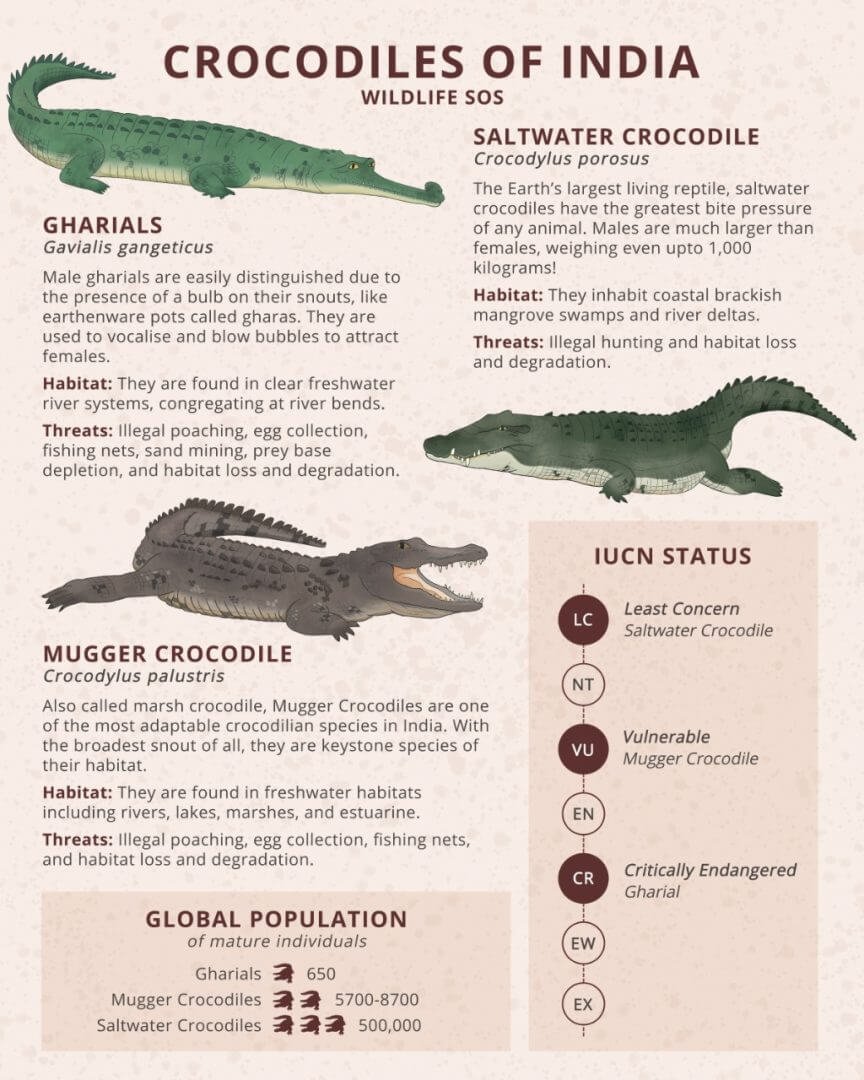
{Prelims – Envi – Species} Nilgiri Tahr
- Context (IE): The Tamil Nadu State Forest Department, in collaboration with WWF-India, successfully radio-collared a fully-grown saddleback (grown-up male) Nilgiri Tahr in Mukurthi National Park.
- This operation marked the first time a mountain ungulate was collared without tranquilizing it.
Nilgiri Tahr

- Nilgiri Tahr, locally known as Varaiaadu, is the state animal of Tamil Nadu.
- It is the only mountain ungulate in southern India among the 12 species found in India.
- Conservation Status: IUCN Status: Endangered | WPA, 1972: Schedule-I
- Distribution: It is endemic to the southern part of the Western Ghats, which falls in the states of Kerala and Tamil Nadu.
- Eravikulam National Park has the highest density and largest surviving population of Nilgiri tahr.
- Habitat: Tropical montane grasslands, sholas forests and rocky areas at high elevations.
- Adaptation: It is adapted to a cold and wet tropical environment. The species is diurnal.
- Population: It is estimated that there are 3,122 Nilgiri Tahrs in the wild.
- Threats: Habitat loss and poaching are the two major threats to the Nilgiri Tahr.
- Significance: It has high-stress tolerance levels.
| Ungulate: A herbivorous hoofed mammal; e.g., cow, sheep, horse, camels etc. |





![PMF IAS Environment for UPSC 2022-23 [paperback] PMF IAS [Nov 30, 2021]…](https://pmfias.b-cdn.net/wp-content/uploads/2024/04/pmfiasenvironmentforupsc2022-23paperbackpmfiasnov302021.jpg)


